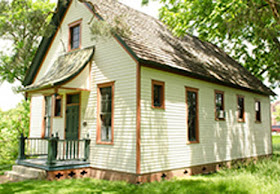The old BlockBase program
A page from Electric Quilt:
"We are working on re-releasing the stand-alone BlockBase software in a new format (for Windows and Mac users) in 2020. Along with the re-release of the software, we are also re-publishing Barbara Brackman’s Encyclopedia of Pieced Quilt Patterns!! We are so excited to work with Barbara on both of these projects." (And Vice Versa say I.)
Waylon and the old Encyclopedia of Pieced Quilt Patterns
Instead of being just black and white sketches we are thinking
of a layout like this with colored blocks
But maybe we can include actual fabric blocks too.
I have plenty of vintage blocks
But what about new blocks....???
So here's what they say at EQ:
Be a Part of Our New Products!
We are looking for talented quilters to submit sewn blocks to be featured in the new software and throughout the new book. These blocks may also be used to promote the products in emails, print advertisements, and social media. We’d love for you to be a part of these products!
What we need:
It’s easy! Just find your favorite block (in BlockBase or in the original book) and sew it in your favorite fabrics! Once completed, print and fill out the form below and ship it with your block to our office.
We are looking for talented quilters to submit sewn blocks to be featured in the new software and throughout the new book. These blocks may also be used to promote the products in emails, print advertisements, and social media. We’d love for you to be a part of these products!
What we need:
It’s easy! Just find your favorite block (in BlockBase or in the original book) and sew it in your favorite fabrics! Once completed, print and fill out the form below and ship it with your block to our office.
Either edition of the book.
Block must be from the BlockBase software or the original Encyclopedia of Quilt Patterns book.
The block must have a Brackman number otherwise we will not use it. You can find this number in the Notecard of the software or next to the block image in the book.
The sewn block should be between 9″ to 12″ in size. Raw edges are fine and will add additional dimension, which is okay.
The sewn block does not need to be quilted, just pieced together.
The sewn block cannot be a variation of the original. The construction must match the block in the software/book.
Use any fabrics you want! Make it modern, make it fun, make it classy, make it patriotic — it’s completely up to you!
Print and fill out the form below.
Ship the block and the completed form to Electric Quilt using the address information included on the form
We will collect all the submissions and use what we can in the book (space is limited) and in the software as inspiration for other users of the new software. We will not return these blocks to you. We will keep them to use for continued promotion of both products.
Wait a minute!
Did that say you are keeping the blocks?
Yes, we are keeping the blocks.
On their page they have a place where you can
Open and print submission form >
A PDF downloads that you can print out and mail with the block.
See the link here:
Now, you may not want to give up your block.
Think about making
one anyway because we are going to continue to ask stitchers to submit blocks
after the new editions are published. We already have a Facebook page and you
can post pictures of your BlockBase/Encyclopedia blocks. Either the ones you are going to mail or ones you want to keep.
Here's the Facebook Page---BlockBaseBlox---ask to join.
Find a block you've always wanted to make. Post it.
Or send it!

















































